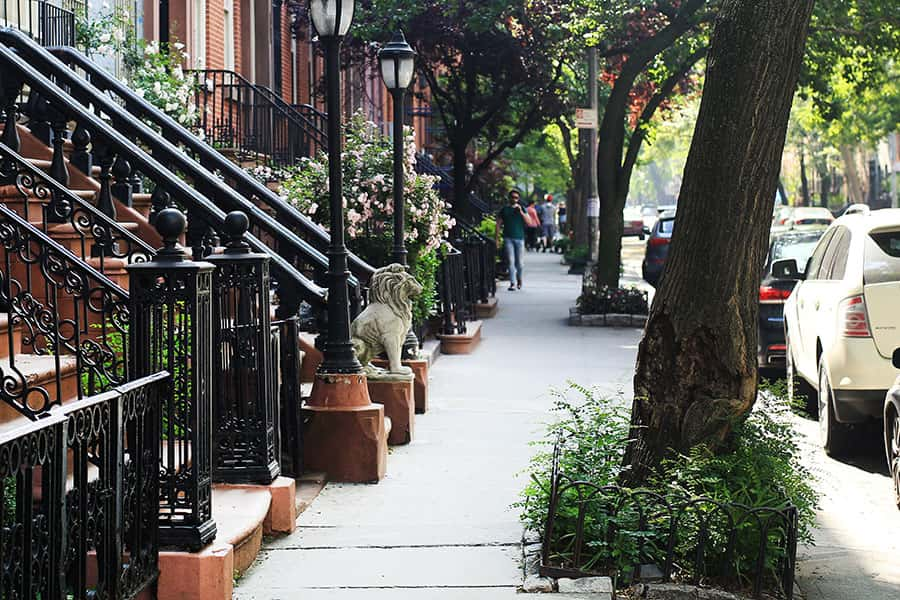When it comes to maintaining your property’s concrete surfaces in Brooklyn, it’s imperative to ensure their durability, safety, and visual appeal. Concrete, over time, can experience wear and tear, weather-related deterioration, and other issues.
In such instances, property owners frequently encounter a common dilemma: Is it best to opt for concrete resurfacing or concrete patching? In this article, we’ll delve into the fundamental distinctions between these two methods, helping you arrive at an educated decision for your Brooklyn property.
Getting to Know the Fundamentals
Both concrete resurfacing and patching are effective strategies for addressing concrete damage. However, they have distinct purposes and are better suited to specific scenarios.
Concrete Resurfacing
Concrete resurfacing entails applying a fresh layer of concrete or a specialized resurfacing material atop an existing concrete surface. This approach is typically employed to rejuvenate older or worn concrete that still possesses structural integrity.
The concrete resurfacing process encompasses meticulous surface preparation, application of the resurfacing material, and final stages of curing and finishing. It serves as a means to restore both the appearance and performance of the concrete.
One significant advantage of resurfacing is its ability to enhance your property’s aesthetics.
Whether your concrete has unsightly blemishes, discoloration, or surface imperfections, resurfacing can provide it with a renewed, uniform appearance. Furthermore, resurfacing can significantly bolster the concrete’s durability, rendering it more resistant to future damage.
Concrete Patching
On the other hand, concrete patching constitutes a localized repair method. It involves identifying and preparing damaged areas before applying a specialized patching material to rectify the issue. This approach is suitable for addressing specific concerns, such as cracks, potholes, and localized damage.
Patching is a cost-effective solution, especially when dealing with isolated concrete problems. It enables the precise targeting and repair of only the affected areas, thereby circumventing the need for extensive resurfacing or replacement.
Ideal Scenarios for Each Approach
To decide between concrete resurfacing and concrete patching for your Brooklyn property, consider the nature and extent of the damage.
Concrete resurfacing proves most beneficial when you have a concrete surface displaying signs of wear and aging but remains structurally sound. This method is particularly effective for addressing surface imperfections and cosmetic issues that affect your property’s overall appearance.
In contrast, concrete patching is ideal for scenarios involving localized damage, such as cracks, potholes, or specific areas requiring attention. Patching enables the efficient repair of these issues without necessitating a full-scale resurfacing project.
Factors to Ponder
Several factors should influence your decision between resurfacing and patching. These include the severity of the damage, budget constraints, long-term property goals, and Brooklyn’s specific climate and environmental conditions.
The extent of the damage is a pivotal factor. If your concrete surface exhibits extensive, widespread damage, resurfacing may present a more cost-effective long-term solution. However, when damage is isolated and confined to specific areas, patching often suffices.
Budget considerations are equally important. Resurfacing generally demands more materials and labor, translating into a more substantial upfront investment compared to patching. Property owners should assess their financial limits when deliberating between the two methods.
Long-term property goals also play a role. If you intend to sell or lease your property in the near future, enhancing its curb appeal and market value through resurfacing could be a wise investment. Conversely, if you plan to retain the property for an extended period, addressing localized issues via patching may prove sufficient.
Lastly, factor in Brooklyn’s climate and environmental conditions. Concrete surfaces in Brooklyn are exposed to various weather conditions, including harsh winters. The choice between resurfacing and patching should account for the concrete’s ability to withstand these conditions over time.
Making an Informed Choice
To make an educated decision between concrete resurfacing and concrete patching for your Brooklyn property, follow these steps:
Evaluate the Concrete Surface: Conduct a meticulous inspection of your concrete surface to identify damage indicators and gauge its overall condition.
Consult a Professional: Seek advice from reputable experts in concrete repair in Brooklyn. Their experience and expertise can provide invaluable insights.
Budget Analysis: Assess your budget and weigh the associated costs of resurfacing versus patching.
Pros and Cons Assessment: Deliberate on aesthetic concerns, structural integrity, and budgetary implications when selecting between the two methods.
Embrace Maintenance: Regardless of your choice, prioritize ongoing maintenance to extend the lifespan of your concrete surfaces and safeguard your investment.
Conclusion:
In conclusion, the decision between concrete resurfacing and concrete patching for your Brooklyn property is a critical one that necessitates thoughtful consideration. By evaluating the extent of the damage, budget constraints, long-term goals, and local conditions, you can make the appropriate choice to ensure your concrete surfaces remain both functional and visually appealing for years to come.
Remember, maintaining your concrete surfaces is not just an investment in your property’s aesthetics, but also in its structural integrity and value. Regular upkeep and prompt repair can prevent small issues from escalating into major problems, ultimately saving you time and money in the long run.
Whichever option you choose, be it resurfacing or patching, prioritize ongoing maintenance to protect your investment and ensure that your Brooklyn property stands strong against the challenges of time and weather.
